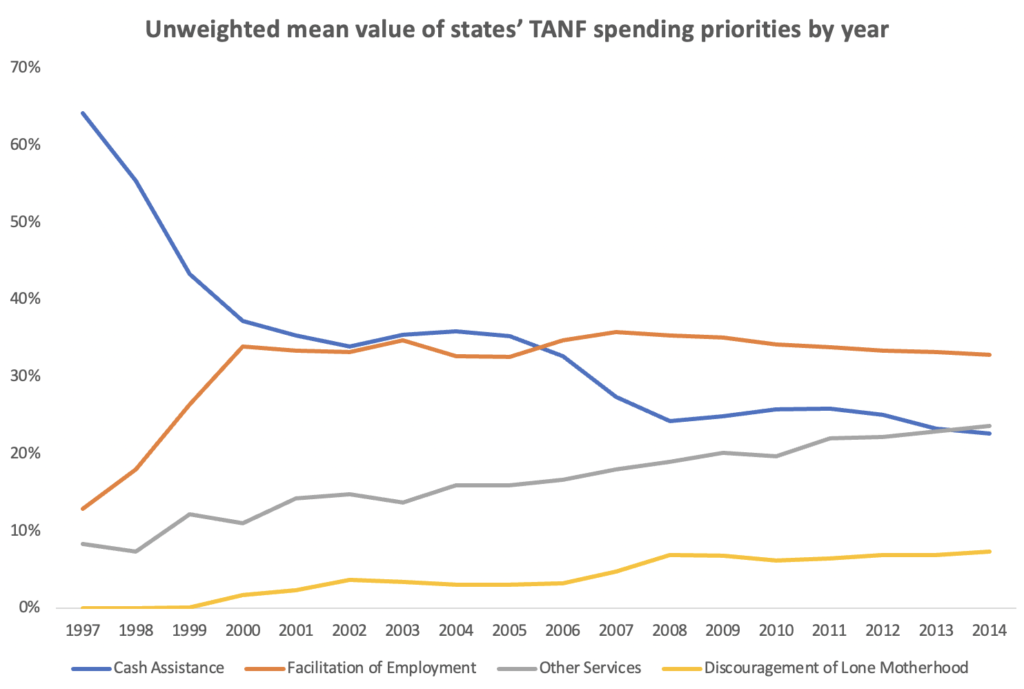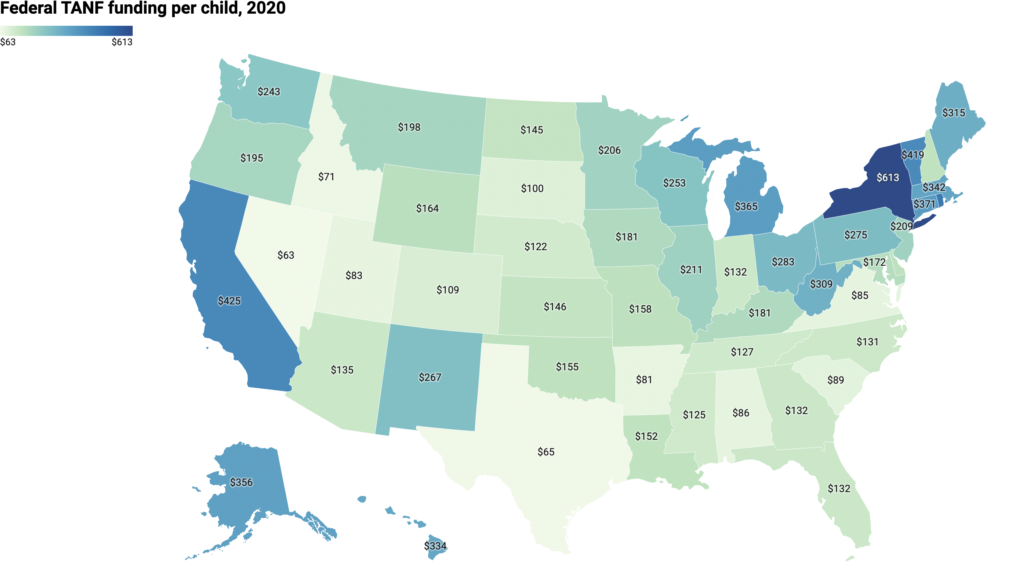Former Hall of Fame quarterback Brett Favre has been in the news for potentially receiving over $1 million from Temporary Assistance for Needy Families (TANF) funds meant to help low-income families in Mississippi. The Favre scandal is just the most recent of a long series of scandals surrounding Mississippi’s misuse of welfare funds.
While some have gleefully applied the same “welfare queen” label to Favre as was affixed to Linda Taylor five decades ago, the Washington Post editorial board used the occasion to point out some of the broader structural issues that have plagued federal TANF funding since the 1996 welfare reforms.
The board touched on two distinct issues – one regarding federal oversight and one about federal support — that are worth exploring further.
“The food there is terrible…”
The Post editorial board rightly points out that lax oversight and unclear standards from the federal government led to a situation where federal TANF grants have “degenerated into an opaque slush fund for states.” A relatively small proportion of TANF funds actually reach families as basic cash assistance. The rest of the funds are siphoned off for other social-policy goals. Between 1997 and 2020, the share of funds used for cash assistance plummeted from 71 percent to 22 percent.
Some progressives point to spending on Republican-favored initiatives to foster marriage or crisis pregnancy centers — or, in Favre’s case, plain old grift — as examples of why we have seen a decline in cash assistance. The reality is that only a small proportion of TANF dollars are used for these ends.
Recent research from Zach Parolin highlights trends in state spending priorities over time. He finds that spending on programs to facilitate employment and other services has overtaken cash assistance as a proportion of total TANF spending. The former includes work subsidies, education/training, child care assistance, and refundable tax credits. The latter category is comprised of various types of social services spending. Spending on programs to discourage lone motherhood has increased but typically only makes up less than 7 percent of total spending.
Figure 1. TANF spending by category 1997-2014

The Favre scandal has gained attention because it’s an egregious abuse of TANF funds. But before this recent period of grift, TANF funding in Mississippi was most likely to be siphoned off for what most would consider reasonable ends like work subsidies, education/training, and child care.
“…and the portions are so small”
The editorial board also correctly points out that federal funding has shrunk considerably over time. Because the value of the block grant is not indexed for inflation, it has lost about 40 percent of its real value since 1997. This erosion is compounded by the fact that it is not adjusted for population size either, leaving fewer dollars to cover more children over time.
These issues are especially problematic for Mississippi because of the way Congress initially structured the TANF block grant back in 1996. As I have explained in “Rich State, Poor State,” state allocations for the new block grant are based on an older matching formula that effectively advantaged wealthy states over poor states. All states may have seen their federal TANF grant shrink over time, but states like Mississippi started from a significantly lower baseline.
Figure 2. Spending per child map

As a result of these shifts, Mississippi receives a fraction of the federal funding per child that wealthy states receive from the same block grant. New York, which is twice as wealthy as Mississippi, receives almost five times as much per child. The disparity is so significant that even if Mississippi spent the entirety of its federal TANF funding on cash assistance, it would still not be able to spend as much per child as New York does now.
Time for a transpartisan deal on TANF?
As with past welfare scandals, the initial reaction on the right will be to get tough on waste, fraud, and abuse in the program, while those on the left will call for more resources.
Among Republicans, the JOBS Act would take important initial steps to increase accountability by limiting state spending on core basic and employment assistance to no less than 25 percent of total spending. In addition, programs would be limited to serving families making no more than 200 percent of the federal poverty line. The bill would also overhaul reporting requirements, but it does nothing to reverse the block grant’s erosion or inequitable allocation.
Among Democrats, the focus has been on increasing the value of the block grants without fully addressing allocation issues or funding leakages to questionable programs. Increasing funding without tackling the source of cash assistance crowd-out is a recipe for disaster.
Effective reform will require tackling the lack of accountability in state spending as well as the shrinking funding and inequities in the allocation of TANF funds across states. Providing support for our most vulnerable families is too important to allow partisan stalemates to stand in the way of fixing TANF.
Photo credit: iStock